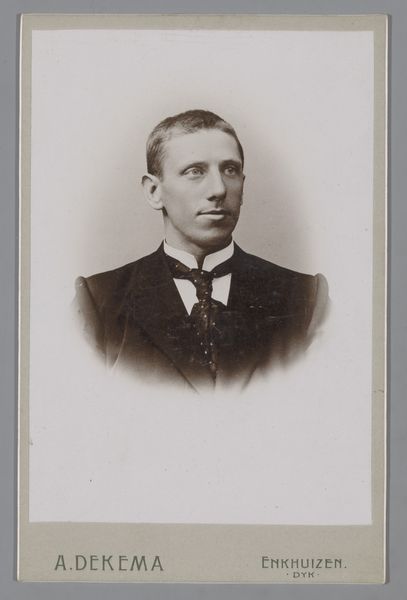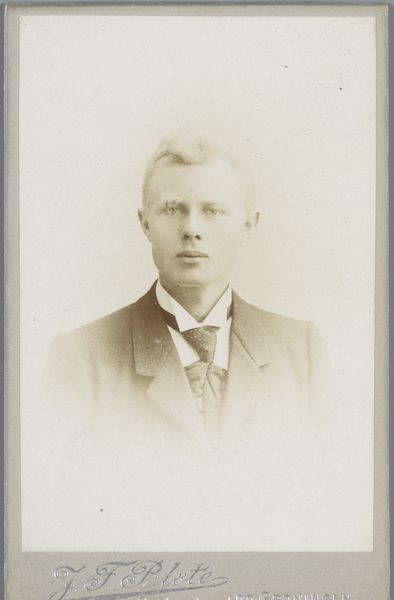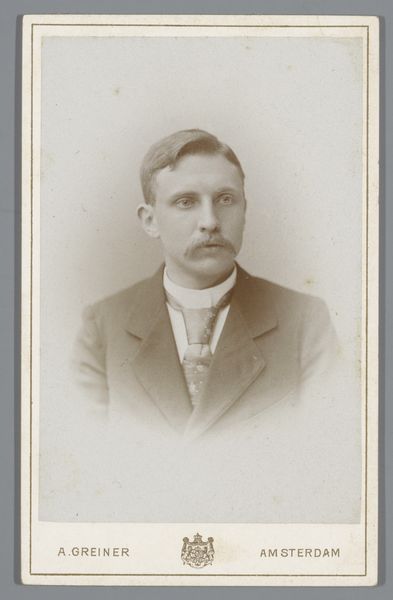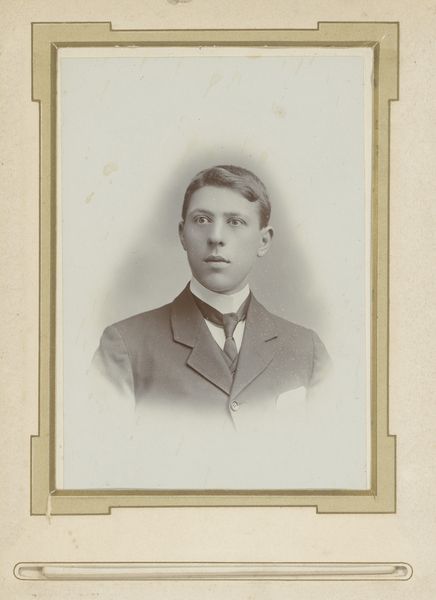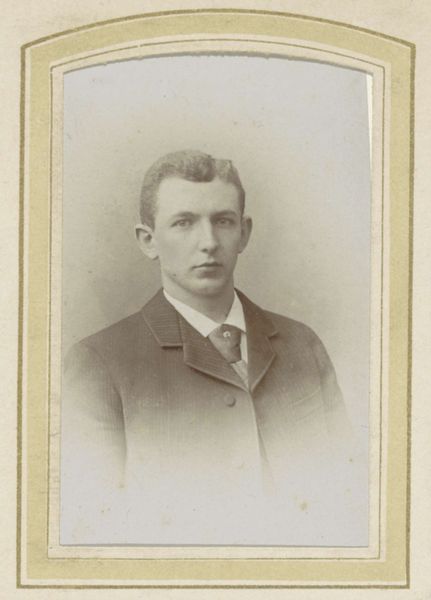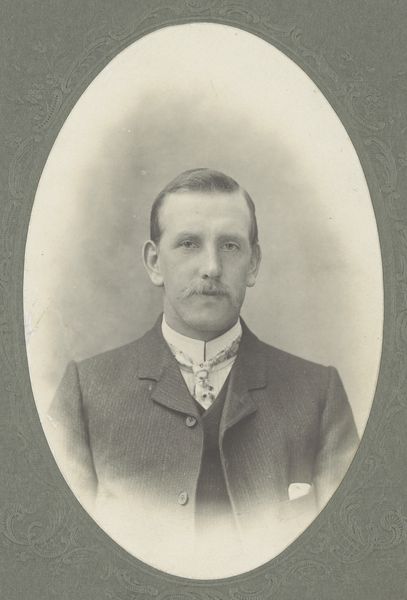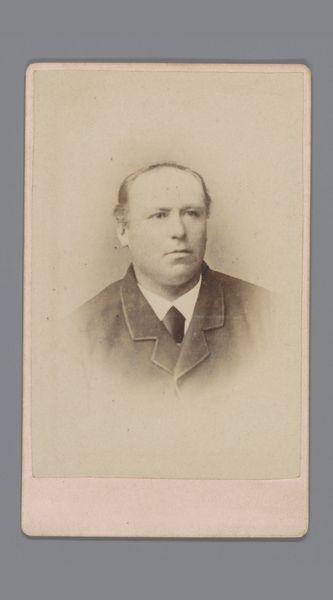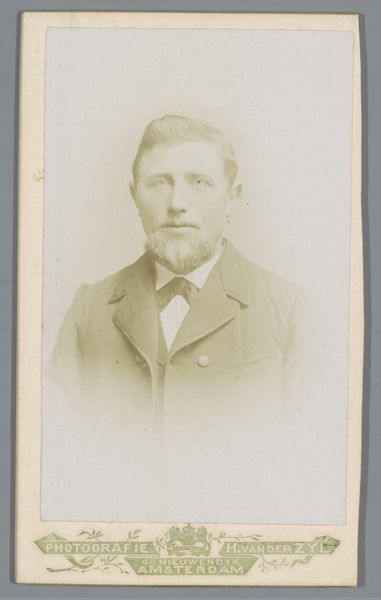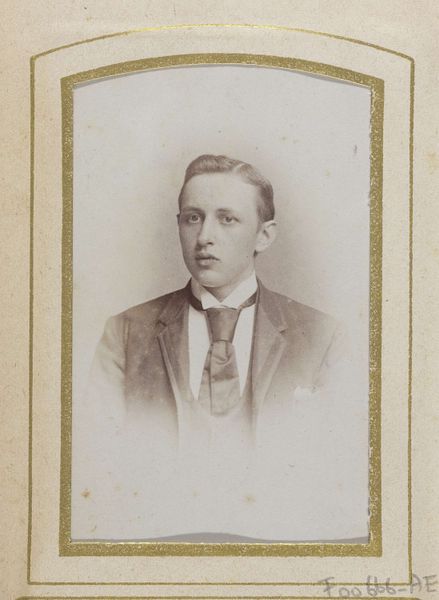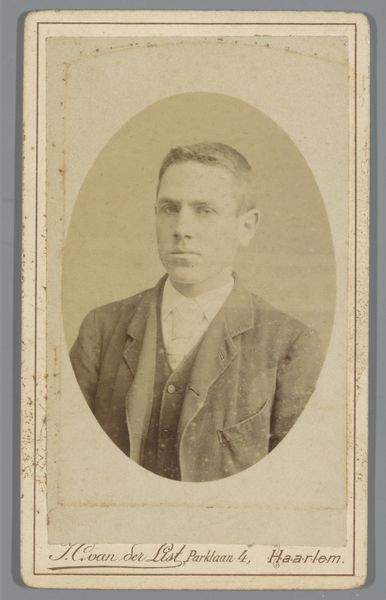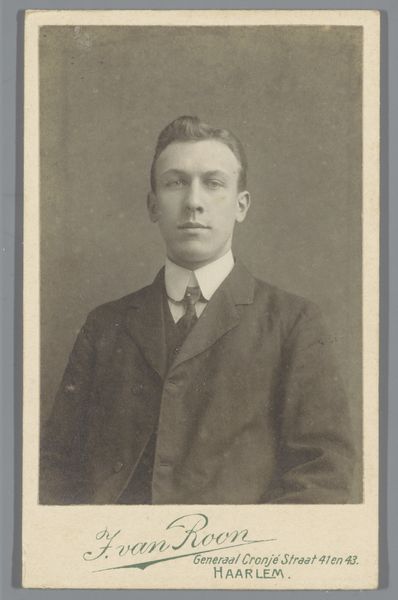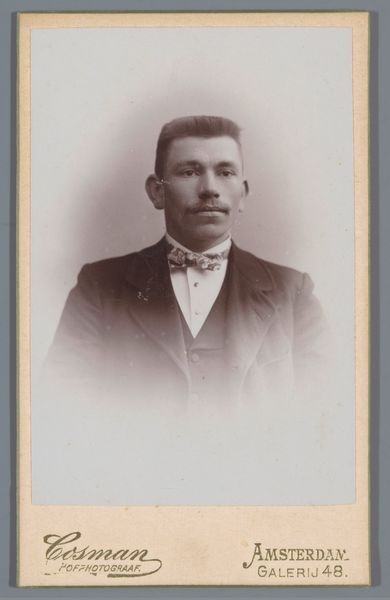
photography
#
portrait
#
photography
Dimensions: length 104 mm, width 65 mm
Copyright: Rijks Museum: Open Domain
This photograph of an unknown man was made by H. van der Zijl in Amsterdam sometime between 1852 and 1937. This portrait utilizes the 19th-century photographic technique known as the Carte de Visite, which translated to “visiting card” in French. The Carte de Visite emerged in the 1850s as a more affordable alternative to painted portraiture, perfectly capturing the era’s burgeoning middle class. It was an early form of mass production; multiple images could be captured on a single glass plate negative, then printed and cut into individual cards. Consider the material qualities of this image, which has a sepia tone that is caused by the chemical development processes. The photograph’s physical size made it suitable for collecting and trading, which contributed to its popularity. The Carte de Visite democratized portraiture, making it accessible to a wider audience. They became a way for individuals to participate in the culture of representation, to present themselves in a certain light. Examining it through the lens of craft and social history allows us to see how even a humble artifact like this can reflect larger economic and cultural shifts.
Comments
No comments
Be the first to comment and join the conversation on the ultimate creative platform.
